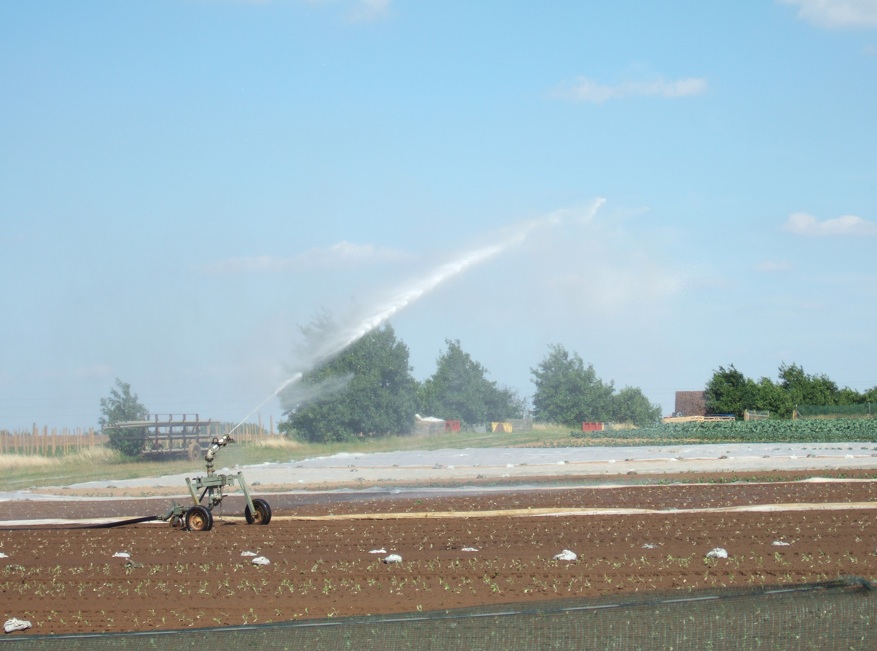
Features
Fruit
Production
Uniform irrigation key to fertigation
April 20, 2009 By Dr. Robert Mikkelsen IPNI
 WEB EXCLUSIVE
WEB EXCLUSIVE
Uniform irrigation key
to fertigation
A crucial requirement for effective fertilizer injection into irrigation water is system uniformity.
April 20, 2009 – A crucial requirement for effective fertilizer injection into irrigation water is system uniformity.
 |
|
| Overhead irrigation using a hose reel and gun system. |
Nutrients applied through the irrigation system cannot be delivered to the crop in the right amount unless the water delivery is uniform across the field.
Both excessive and under-irrigation can reduce crop yield and quality. A mere 10 per cent change above or below the optimal water supply can impact the yield of many crops. Over irrigation can reduce plant growth by causing poor soil aeration, increasing root diseases and leaching nutrients from the root zone. A lack of water increases plant stress, limits photosynthesis, and stunts cell development. While meeting the average crop water need is important, uniform application of water over the field is equally important. If using a non-uniform irrigation system, too much water and fertilizer will be applied in one area, and shortchanged in another.
Using a drip irrigation system as an example, an application that is 100 per cent uniform would deliver exactly the same amount of water from every emitter each hour. If there is variability between the emitters, the amount of water and applied nutrient can vary widely for each plant in the field. Physical, chemical and biological plugging and uneven water pressure can cause increased variability in water delivery for micro-irrigation systems.
Having an irrigation system with a high uniformity leads to higher crop yields and profitability. Well-designed and maintained centre-pivot and linear-move irrigation systems are capable of attaining uniformity coefficients of 90 to 95 per cent. Common problems causing water to be poorly distributed include worn nozzles, improper pump pressure, misaligned heads, and windy conditions during irrigation.
Surface irrigation can also deliver water very uniformly under ideal conditions and management. Irrigation uniformity using surface irrigation techniques is highly dependent on the water infiltration rate and other soil properties.
In addition to uniform irrigation systems, also take care to inject the fertilizer so that it is distributed through the entire field. The injected nutrients do not immediately start coming out of the irrigation system plumbing. Do not inject the fertilizer and then quickly shut down the irrigation system. Always run clean water after adding fertilizer.
Mixing soluble fertilizer with the irrigation water can be an excellent method of delivering nutrients to crops. There are many outstanding sources of nutrients that are compatible with various irrigation systems. Remember to pay attention to the entire system to get the most value from your irrigation water and added nutrients.
Dr. Robert Mikkelsen is the western North American director of the International Plant Nutrition Institute (IPNI). He can be reached at rmikkelsen@ipni.net.
Print this page